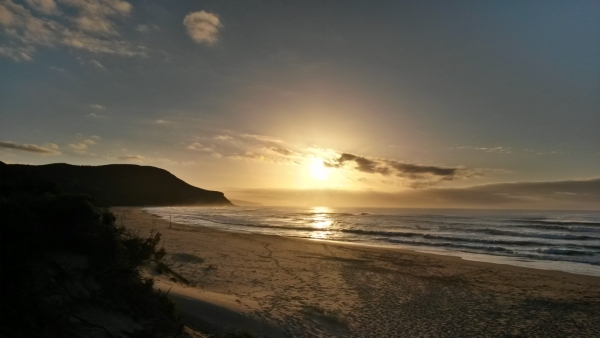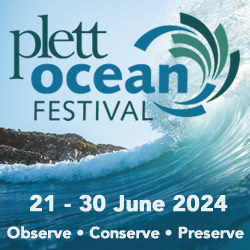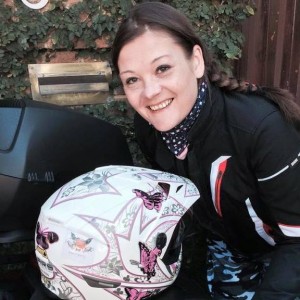
 The theme for World Oceans Day today is Healthy oceans, healthy planet, and it encapsulates the ethos we have about our work at the Nature’s Valley Trust. So much of what we do involves creating awareness of the global issues facing our oceans, measuring the impact we as people have on our coastline, and trying to see how we can mitigate this and enable communities at all ends of the South African spectrum to use our special coastal resources more sustainably. In celebration of World Oceans Day today, we thought we would give you an overview of what our coastal work entails.
The theme for World Oceans Day today is Healthy oceans, healthy planet, and it encapsulates the ethos we have about our work at the Nature’s Valley Trust. So much of what we do involves creating awareness of the global issues facing our oceans, measuring the impact we as people have on our coastline, and trying to see how we can mitigate this and enable communities at all ends of the South African spectrum to use our special coastal resources more sustainably. In celebration of World Oceans Day today, we thought we would give you an overview of what our coastal work entails.
As you all know, NVT’s four main pillars of work are ecological research, conservation education, community engagement and conservation in action – and we have programs that cover all these aspects in our coastal work:
Ecological Research:
We have spent literally THOUSANDS of hours in the last few years investigating interactions of people and biodiversity – without this important information there is no way to know where our education and conservation efforts should be placed. Over the last few years we have measured the impact of people and dogs on breeding gulls, oystercatchers and plovers breeding on our beaches, we have assessed how shore-based fishing has changed over the last 12 years, we have studied what litter is on our beaches, where it is from, and who has most likely left it there. In addition, we have monitored fish stocks in the Groot River Estuary, conducted water bird counts, and are contributing data to several important citizen science projects. From a marine perspective the ELMO project is the most significant citizen science program we are collecting data for – both shark egg casing and sightings of sharks (both dead and alive).

Understanding the impact we have on these birds helps us how to co-exist with them better. We need to share the shores!
Thanks to our amazing team of researchers, interns, postgraduate students and volunteers we now have incredible data upon which we can act. For instance, we now know:
- Kelp Gulls do fine with people moving close to their nests
- African Black Oystercatchers leave their nests when you are as far as 60m away, leaving their eggs exposed to high temperatures and predators
- In White-fronted Plovers, less than 10% of the eggs that are laid actually end up fledging chicks, an exceptionally low reproductive success
- Shore-based fisherman have had a 60% decline in catch rate than just 12 years ago – in other words you have to fish more than twice as long as you did to catch a fish now than just 12 years ago!
- The top 5 species caught by shore-based fisherman are all significantly smaller than they were 12 years ago.
- The Groot River estuary is quite possibly the most important nursery ground for Cape Stumpnose and White Steenbras in our region – with healthy populations of small fish being found year round.
- Between Groot River in the East, and Robberg in the West, we now know that 62% of all litter found can be categorised as shore-based recreational use, and this includes 14% being from fishing related activities.
- In Nature’s Valley, our data for February to May indicate that fisherman make up only 10% of the users of the beach, but contribute 40% of the litter found on the beach, excluding their food and beverage litter.
- We are participating in fish stock research in our bay to assess whether there is sufficient bait fish for the establishment of a land-based penguin colony in Plett – watch this space!

Understanding where litter on our beaches come from, and what marine fish use our estuary, are key questions if we want to have positive impact.
Conservation Education:
Our excellent education team, headed by Cindy-Lee Cloete, work in most of the public schools in the Bitou region to educate the youth of our area about some of these issues. We have a range of approaches that we use, that bring ocean conservation awareness to our children. This involves large once off events where many children are educated on a once off basis on a particular topic, to small group intense instruction over an extended period of time:
- Adopt-a-Beach program – we currently run this annual program with two local schools, and hope to extend it to four next year. Grade 6 and 7 learners are brought down to the beach in nature’s Valley for custom designed outdoor lessons around core themes identified by our research team as being locally relevant.
- Adopt-a-River program – in coastal areas, what’s in our rivers ends up in our ocean! We work with several local schools, conducting regular outings to rivers within the relevant community to use Mini-SASS, where children assess the ecological health of their own river using macro-invertebrates.
- Calendar events – we select a few key events on the international calendar to focus on each year, and bring down school groups from various schools to participate in hands on outdoor learning experiences. For example, we recently had over 100 children from two local schools celebrate biodiversity week with us, covering issues such as recycling, water conservation, careers in biodiversity and food webs.
- Eco-clubs – we have several schools who participate in WESSA’s Eco-Schools program, with NVT running eco clubs in the schools, assisting each club to achieve their target and relevant status for the program for a particular year.
- Our birding masters and champions program sees local children from four schools mentored by experienced bird watchers from BirdLife Plettenberg Bay, crossing cultural bridges and teaching skills, while developing an environmental conscience in our children.
Our Adopt-a-Beach Program gives kids hand on learning experiences on the beach
Community Engagement:
Our long standing relationship with the key communities that surround Nature’s Valley enables us to run programs at a community level, with residents from all walks of life. Our long term goal here is ecologically aware communities that make informed decisions in terms of their everyday behaviour that has an effect on their own environment. Some of our community programs include:
- Greening programs in several communities, some now spanning over a decade. In Kurland this has led to the establishment of a gardening club that has taken over the re-greening program, with NVT now playing more of a facilitatory role.
- Clean-up events and recycling workshops that lead to cleaner communities and in the case of Kurland has seen the establishment of a community driven recycling swop shop.
- Co-ordination of International Coastal Cleanup Day in September each year, and which now annually includes clean-ups in Kurland, on Nature’s Valley beach, and in Plettenberg Bay – look out for this years exciting program as we celebrate the 20th international Coastal Cleanup in September!
- Public talks and demonstrations, around key themes – for example, shorebird walks in summer to engage the public on the issues our breeding birds deal with on our beaches.
- Active social media engagement, and use of more traditional media like newspaper and radio to increase public awareness of key marine issues in our area.
- Installation and monitoring of Fisherman’s Bins, where beach users can deposit discarded fishing line as they come off the beach.
- In addition, we have a fully funded (thanks Table Mountain Fund!) stakeholder training program that enables us to equip community members with skills needed to better understand key environmental issues in our area. For example, in the last 12 months we have run environmental legislation workshops, marine stranding training, bird identification courses and much more.

Beach cleanups are a great way to mobilise communities while educating them about local conservation issues on our beaches.
Conservation in action:
At the end of the day, long term sustainable management of our coastal resources, and their conservation for future generations, is one of our main goals. To this end, we have worked hard to secure some important international labels for our region, and will continue to use our programs to enhance our understanding of how valuable our coastal biodiversity is, and to enhance its conservation status:
- Plett Hope Spot – we were very privileged to have been one of the partner organisations that saw the Plettenberg Bay area, including Nature’s Valley, designated as one of Africa’s first six Hope Spots in December 2014, by Dr Sylvia Earle of the mission Blue Alliance. Hope Spots identify unique areas that have valuable biodiversity and that showcase the marine environment in a region.
- BirdLife Internationals Important Bird and Biodiversity Areas Program (IBA) – Using a combination of NVT’s ecological data, and additional data collected on various citizen science programs, we were able to successfully increase the boundary of the old Tsitsikamma IBA to extend all way up to and including Robberg Marine Protected Area in Plett. The new Tsitsikamma-Plettenberg Bay IBA highlights the area as a globally significant area, based mostly on the bird species that live in it.

Happy World Ocean’s Day from Nature’s Valley!
From a coastal conservation point of view, we are thoroughly spoilt living between two Marine Protected Areas, but have a BIG responsibility to ensure that marine resources between these two MPA’s are sustainably used – so important in a town that is driven by its coastal tourism. We are grateful for the amazing support we receive for our work, and look forward to sharing more success stories with you I future – happy World Oceans Day!












